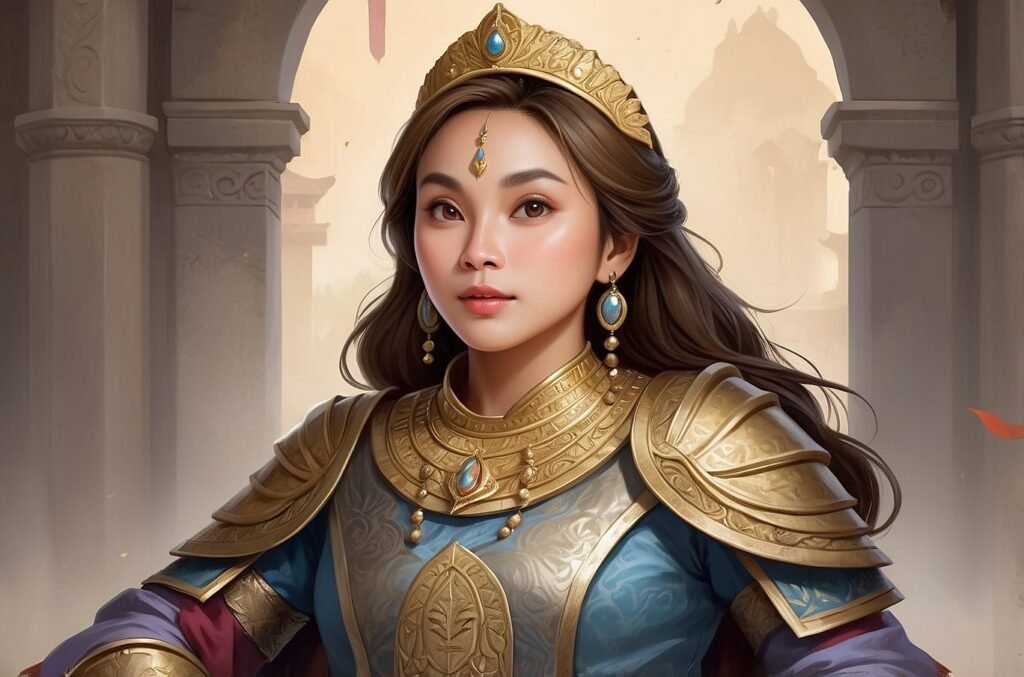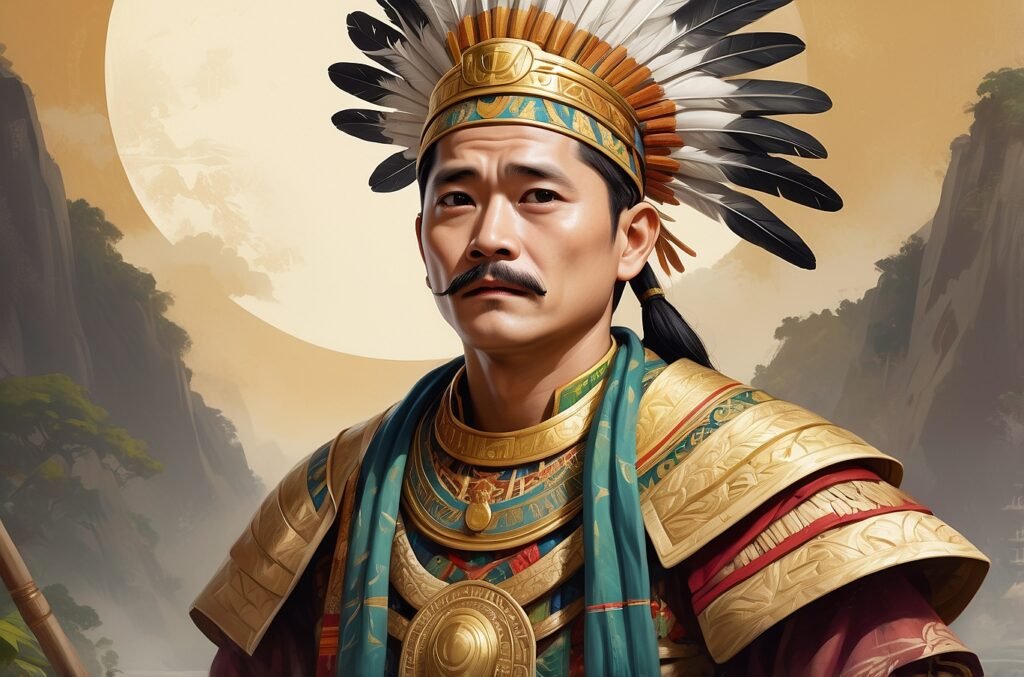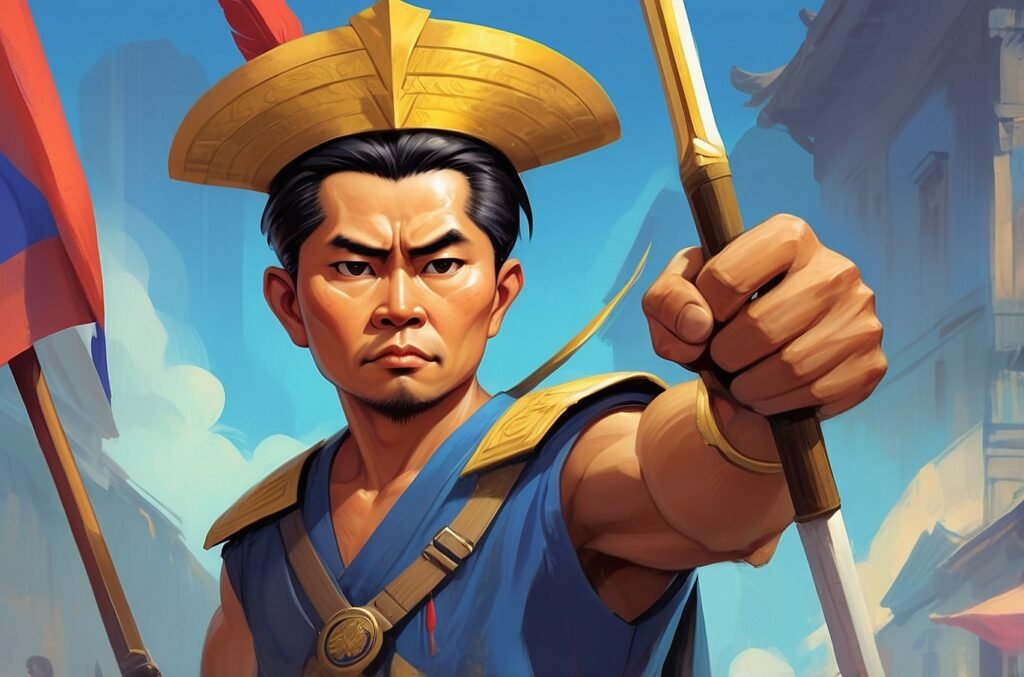In the annals of Philippine folklore and history, few figures captivate the imagination quite like Princess Urduja, the legendary warrior princess of Pangasinan. This enigmatic figure, shrouded in mystery and controversy, has long been a subject of fascination for historians, folklorists, and the general public alike. Princess Urduja is said to have ruled over the kingdom of Tawalisi in the 14th century, a land believed by some to be located in present-day Pangasinan, a province in the northern Philippines. Her tale is one of strength, leadership, and defiance against traditional gender roles, making her an enduring symbol of Filipino women’s empowerment and national pride. This blog post delves into the legend of Princess Urduja, exploring the historical context, cultural significance, and ongoing debates surrounding this intriguing figure.
The Legend of Princess Urduja
Origins of the Legend
The story of Princess Urduja first emerged in the Western world through the writings of Ibn Battuta, a renowned Moroccan explorer and scholar who traveled extensively throughout Asia in the 14th century. In his travelogue, “Rihla” (The Travels), Ibn Battuta recounts his alleged encounter with a formidable female ruler in the kingdom of Tawalisi. This account, though fascinating, has been the subject of much scholarly debate and scrutiny. The location of Tawalisi itself remains a point of contention, with some historians placing it in the Philippines, while others argue for alternative locations in Southeast Asia or even India.
Characteristics of the Legendary Princess
According to the legend, Princess Urduja possessed qualities that set her apart as an exceptional ruler and warrior:
- Military prowess: She was said to be skilled in warfare and led her own army.
- Physical strength: Legends speak of her impressive physical abilities and combat skills.
- Intelligence: She was described as highly educated and fluent in multiple languages.
- Leadership: Urduja was portrayed as a just and capable ruler of her kingdom.
- Independence: She reportedly refused to marry unless she found a suitor who could defeat her in combat.
These attributes paint a picture of a woman who defied the gender norms of her time, embodying strength, wisdom, and leadership typically associated with male rulers of the era.
Historical Context
14th Century Philippines
To better understand the context in which the legend of Princess Urduja emerged, it’s essential to examine the historical landscape of the 14th century Philippines:
| Aspect | Description |
|---|---|
| Political Structure | Barangay system; small, independent communities led by datus or chiefs |
| Economy | Based on agriculture, fishing, and trade with neighboring islands and foreign merchants |
| Social Hierarchy | Stratified society with nobles, freemen, and dependent classes |
| Religion | Animism and ancestor worship; early influences of Islam in some regions |
| Foreign Relations | Active trade with China, other Southeast Asian kingdoms, and Arab merchants |
This period was characterized by a complex network of trade relationships and cultural exchanges, which could have facilitated the spread of stories and legends across different regions.
Women in Pre-Colonial Philippine Society
The legend of Princess Urduja gains additional significance when considered in the context of women’s roles in pre-colonial Philippine society:
- Women held positions of power and influence, including roles as babaylans (spiritual leaders) and occasional community leaders.
- They had rights to property ownership and could engage in trade and commerce.
- Divorce and remarriage were accepted practices.
- Women played crucial roles in agricultural production and household management.
This relatively egalitarian social structure provides a plausible backdrop for the emergence of a legendary female ruler like Princess Urduja.
Geographical Debates
The Location of Tawalisi
One of the most contentious aspects of the Princess Urduja legend is the location of her supposed kingdom, Tawalisi. Several theories have been proposed:
- Pangasinan, Philippines: Many Filipino historians and locals believe Tawalisi was located in present-day Pangasinan.
- Sumatra or Java: Some scholars argue that Ibn Battuta’s description better matches locations in Indonesia.
- India: A minority view suggests Tawalisi might have been located on the Indian subcontinent.
- Fictional location: Some historians propose that Tawalisi may be entirely fictional or a composite of various places Ibn Battuta visited.
The debate surrounding Tawalisi’s location highlights the challenges in reconciling historical accounts with geographical and archaeological evidence.
Pangasinan’s Claim
Pangasinan, a province in the northern Philippines, has strongly embraced the legend of Princess Urduja. Several factors contribute to this association:
- Linguistic similarities between local dialects and some words mentioned in Ibn Battuta’s account.
- Geographical features that align with descriptions in the travelogue.
- Local oral traditions and folklore that incorporate elements of the Urduja legend.
- Cultural and political initiatives that have promoted the connection between Pangasinan and Princess Urduja.
While the historical accuracy of this claim remains debated, the legend has become an integral part of Pangasinan’s cultural identity.
Historical Evidence and Scholarly Debates
Archaeological Findings
Despite extensive research, concrete archaeological evidence directly supporting the existence of Princess Urduja or her kingdom remains elusive. However, archaeological discoveries in the Philippines and surrounding regions provide insights into the historical period:
- Trade goods from China, India, and other parts of Southeast Asia found in Philippine sites.
- Evidence of advanced metalworking and pottery production.
- Remains of fortified settlements and complex social structures.
While these findings don’t prove the existence of Princess Urduja, they demonstrate the sophistication of Philippine societies during the period in question.
Scholarly Perspectives
The academic community remains divided on the historicity of Princess Urduja. Here’s a summary of the main viewpoints:
- Historical figure: Some scholars argue that Princess Urduja was a real historical figure, possibly conflated with other rulers or embellished over time.
- Mythical creation: Others contend that she is entirely mythical, possibly created to embody ideal leadership qualities or to serve as a symbol of resistance against colonial powers.
- Composite character: A middle ground suggests that the legend may be based on one or more historical figures, combined with mythical elements.
- Misinterpretation of sources: Some researchers propose that the entire story might result from misinterpretations or mistranslations of Ibn Battuta’s original text.
These diverse perspectives highlight the complexity of separating historical fact from legend in the absence of conclusive evidence.
Cultural Impact and Legacy
In Philippine Culture
Regardless of her historical authenticity, Princess Urduja has left an indelible mark on Philippine culture:
- Symbol of women’s empowerment: She serves as an inspiration for Filipino women, embodying strength, leadership, and independence.
- National pride: The legend contributes to a sense of pre-colonial Filipino identity and resistance against foreign domination.
- Literary and artistic inspiration: Numerous books, plays, and artworks have been created based on her story.
- Tourism: Pangasinan has developed tourist attractions and events centered around the Princess Urduja legend.
- Educational impact: The story is often included in Philippine history lessons, sparking discussions about historiography and cultural identity.
Modern Representations
Princess Urduja’s legend continues to evolve in modern times:
- Media adaptations: Television shows, movies, and comic books have featured versions of her story.
- Public monuments: Statues and landmarks dedicated to Princess Urduja can be found in Pangasinan and other parts of the Philippines.
- Naming conventions: Schools, streets, and even a Philippine Coast Guard vessel have been named after her.
- Academic discourse: The legend remains a topic of scholarly research and debate in fields such as history, anthropology, and folklore studies.
Comparative Analysis: Princess Urduja and Other Legendary Female Rulers
To better understand the significance of the Princess Urduja legend, it’s useful to compare her with other legendary female rulers from around the world:
| Legendary Figure | Culture/Region | Key Similarities | Key Differences |
|---|---|---|---|
| Boudica | Celtic Britain | Military leader, resistance against foreign powers | Historical figure with more concrete evidence |
| Mulan | China | Female warrior, disguised as male | Primarily a folk hero, not a ruler |
| Cleopatra | Egypt | Powerful female ruler, multilingual | Well-documented historical figure |
| Himiko | Japan | Shamanistic ruler, mentioned in Chinese records | More historical evidence, though still debated |
| Amina | Nigeria | Warrior queen, expanded territory | Closer historical period, more local records |
This comparison illustrates that while the concept of legendary female rulers is not unique to the Philippines, Princess Urduja’s story contains distinctive elements that reflect the specific cultural and historical context of the region.
The Significance of Princess Urduja in Modern Times
As a Symbol of Filipino Identity
In the context of post-colonial Philippine society, Princess Urduja has taken on significant symbolic importance:
- Pre-colonial greatness: She represents a period of perceived Filipino strength and independence before Western colonization.
- Cultural uniqueness: The legend emphasizes distinctly Filipino characteristics and values.
- Regional pride: For Pangasinan and surrounding areas, Princess Urduja serves as a source of local identity and distinction.
- Historical continuity: The legend provides a link between modern Filipinos and their ancestral past.
- Resistance narrative: Her story can be interpreted as a metaphor for Filipino resistance against foreign domination.
In Women’s Empowerment
Princess Urduja’s legend continues to play a role in discussions about women’s rights and empowerment in the Philippines:
- Role model: She serves as an inspirational figure for women in leadership and traditionally male-dominated fields.
- Historical precedent: The legend is often cited to argue for the traditional strength and authority of Filipino women.
- Educational tool: Her story is used to teach young people about gender equality and women’s potential.
- Political symbolism: Female politicians sometimes invoke Princess Urduja to legitimize their leadership roles.
Challenges and Controversies
Historical Accuracy Debates
The ongoing controversy surrounding the historical authenticity of Princess Urduja presents several challenges:
- Lack of primary sources: Beyond Ibn Battuta’s account, there is a scarcity of contemporary historical records mentioning Princess Urduja or Tawalisi.
- Inconsistencies in geographical descriptions: Some details in Ibn Battuta’s account do not align well with the known geography of the Philippines.
- Absence of archaeological evidence: No definitive archaeological findings directly support the existence of Princess Urduja or her kingdom.
- Potential cultural bias: Some scholars argue that the legend may have been influenced by colonial-era interpretations or nationalist aspirations.
- Risk of historical distortion: Overemphasis on legendary figures may overshadow the study of documented historical events and figures.
Balancing Legend and History
The case of Princess Urduja raises important questions about how societies balance legendary narratives with historical research:
- Cultural value vs. historical accuracy: How should the cultural importance of legends be weighed against the need for historical accuracy?
- Educational approaches: What is the appropriate way to teach about figures like Princess Urduja in schools?
- Impact on historical research: How does the popularity of legendary figures affect funding and interest in other areas of historical study?
- Tourism and economic considerations: How should regions balance the economic benefits of legend-based tourism with historical integrity?
Conclusion
The legend of Princess Urduja, the warrior princess of Pangasinan, remains a captivating and controversial topic in Philippine history and culture. While her historical existence continues to be debated, her impact on Filipino identity, women’s empowerment, and cultural pride is undeniable. The story of Princess Urduja serves as a fascinating case study in the complex relationship between legend, history, and national identity.
As research continues and new methodologies emerge, our understanding of figures like Princess Urduja may evolve. Regardless of her historical authenticity, the legend of Princess Urduja offers valuable insights into Philippine culture, gender roles, and the power of national myths. It challenges us to consider how we interpret and value our historical narratives and the role they play in shaping our present and future.
Disclaimer: This article presents a compilation of available information and scholarly perspectives on Princess Urduja. Given the legendary nature of the subject and ongoing historical debates, some details may be subject to different interpretations or future revisions. Readers are encouraged to engage critically with the information presented and consult additional academic sources for the most up-to-date research on this topic. If you notice any inaccuracies or have additional verified information, please report them so we can promptly update and improve the accuracy of this article.




